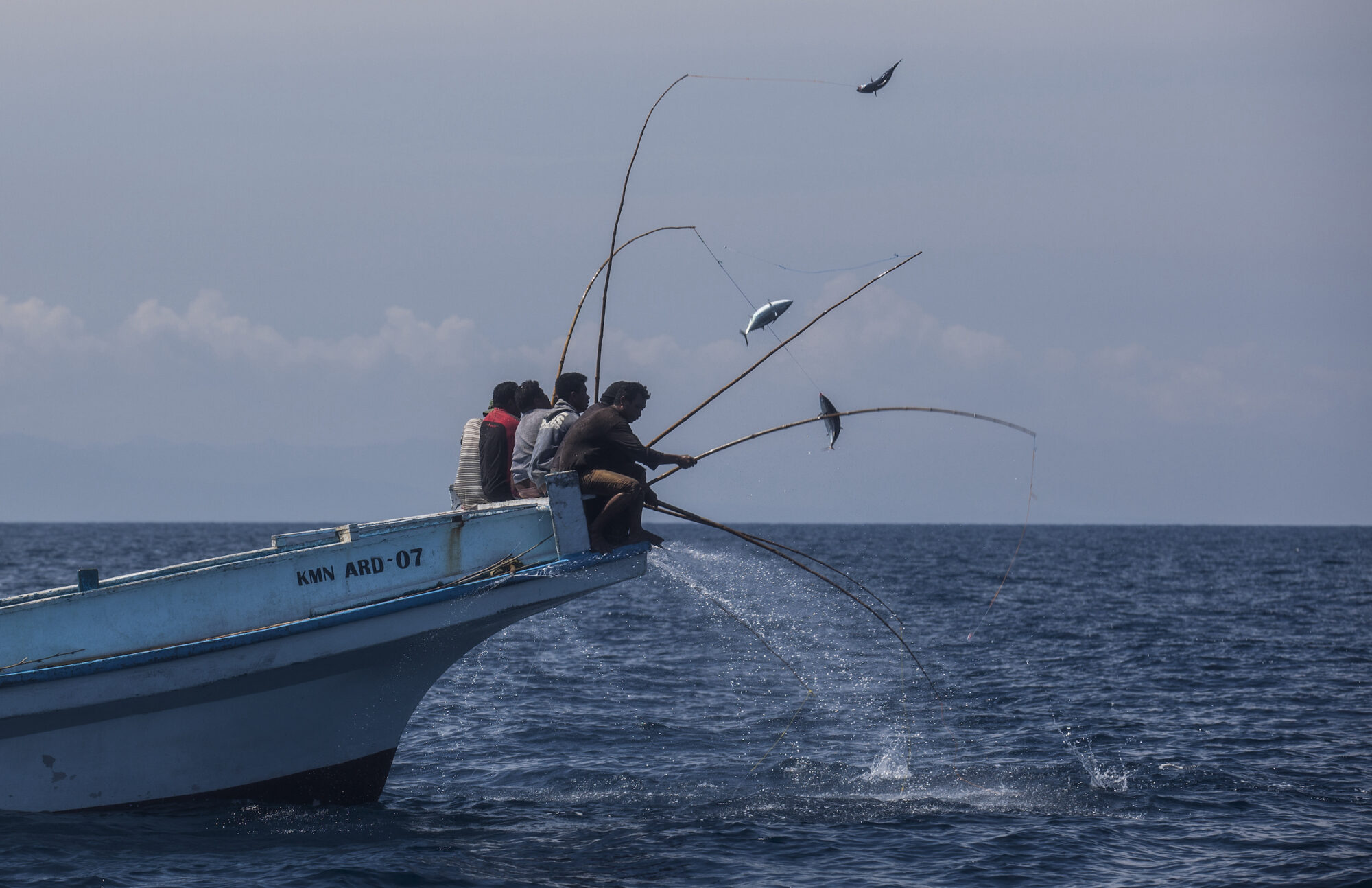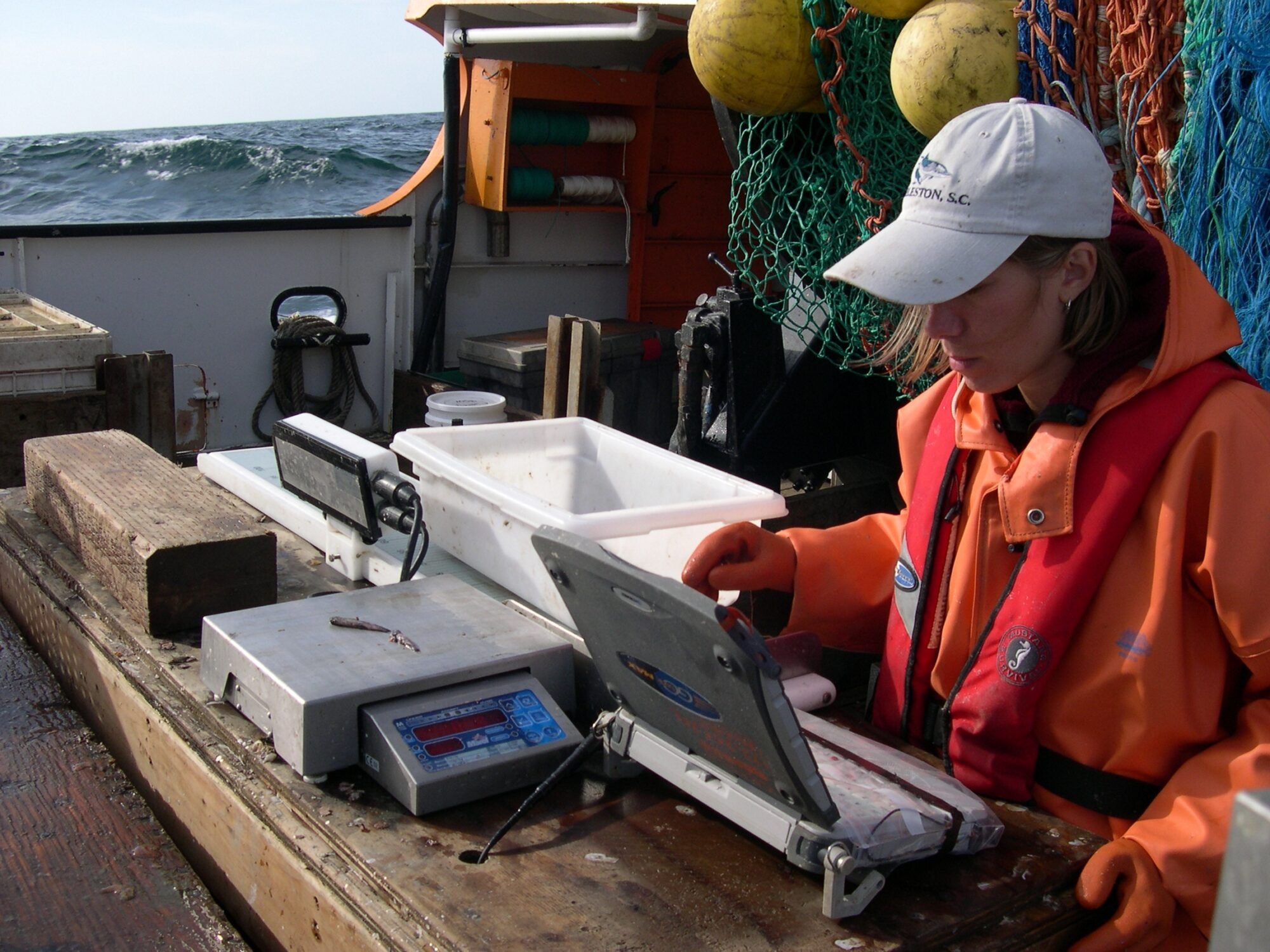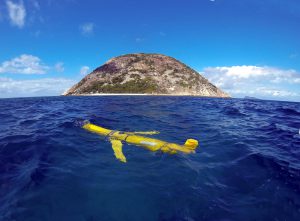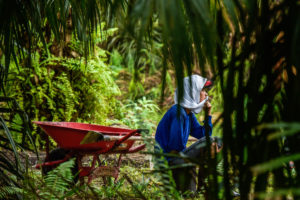There’s a growing conversation around the need for full traceability in the seafood supply chain, from ocean or farm all the way to the consumer’s plate. Greater transparency would expose and discourage practices like illegal fishing, seafood fraud and labour abuses. Many believe full-chain traceability is the only sure way to identify seafood obtained via illegal, unreported and unregulated (IUU) fishing, and to move the whole industry towards environmental and social sustainability.
Editor’s note
This is the second of two articles on tech in the seafood supply chain. Read the first part here: Tracing seafood with technology.
In recent years, several tech tools – DNA sampling, blockchain, electronic monitoring, satellite surveillance – have entered the fray. These are producing large amounts of data across the supply chain and have the potential to improve the industry’s overall transparency. Yet a question looms large over these efforts: how is this data being shared and to what ends?
“Those [technologies] increase your ability to access data, the amount of data you have access to, and how quickly you can see it. But that doesn’t actually solve any problems,” says Fiona Lugo-Mulligan, traceability and data modernisation program director at the non-profit Future of Fish. In other words, tech innovation won’t help in a vacuum: we need better ways of using and sharing the data it collects, if the industry plans to achieve full-chain traceability. As Annie Brett sees it: “These new sources of data are an impetus to improve our data management and sharing systems.”
Privacy and sharing hurdles
One obstacle to this goal is that the fishing industry hasn’t been set up to share and collaborate. That’s partly down to concerns from fishers that government would use fishing data to shut down fisheries, or impose restrictions, Brett explains. A habit of guarding data closely has also permeated supply chains. As these grow more complex and harder to control, businesses may become more reticent to seek or share information, considering the possibility it will reveal illegal activity or error, explains Maggie Lee. “It’s the case with any type of sustainable sourcing that [businesses] are hesitant to take the next step, because they know there’s this massive problem with illegal seafood, illegal palm oil, illegal everything.”
However, an evolving framework of legislation, treaties and regulation is starting to make that decision for seafood businesses. Governments are increasingly requiring proof of traceability to curb imports of IUU fish. The United States’ Seafood Import Monitoring Program requires importers to share data about seafood’s journey from point of harvest to US port. European Union regulations have similar requirements. In late 2020, Japan became the third major seafood-consuming nation to impose traceability demands with a new law that requires proof of the legality of imported catch.
Now, the new fleet of technologies is also making it easier to gather and store data at multiple points along the supply chain. Yet even with these positive changes, there remain many stumbling blocks in the way of full-chain traceability. Achieving that will require massive information-sharing between governments, fishers, businesses and NGOs. But industry players gather a huge variety of data, and record and store it in differing ways. This inconsistency makes it near-impossible for traceability information to be “interoperable” – transferred and used across channels. “There are many systems in place, but they do not talk to each other,” says Nianjun Shen.
A solution to this intelligibility problem may be on the horizon.
Sea change
In April 2017, 24 companies came together, supported by WWF and an organisation called the Institute of Food Technologists, to launch the Global Dialogue on Seafood Traceability (GDST). This industry-led initiative was set up to draft standards that would enable businesses to record and freely share traceability information across the seafood supply chain. Three years later, in March 2020, the GDST released its first official set of standards, called the GDST 1.0.
These standards identify a set of “key data elements”, a baseline of information required to enable traceability through each stage of the supply chain. They also provide guidelines on the precise format in which companies should record and input this information. The goal is to standardise traceability information, making it easier for companies to lift data out of its silos and share it seamlessly with each other and across different systems. This, it is hoped, will increase traceability and transparency across the industry. “We’re giving [companies] the language in which to share information interoperably, and digitally,” explains Traci Linder, who co-ordinates the team that leads the GDST and is a manager on the WWF-US Global Seafood Traceability Team. “Our ideal scenario is that the standards become a commercial necessity of doing business.”

Things already seem to be heading that way. Amid research and growing attention on the need for corporations to help sustain the oceans, several alliances between businesses, researchers and governments have formed in recent years. These include the Seafood Business for Ocean Stewardship, which features the industry’s 10 biggest seafood companies, the USAID-backed Seafood Alliance on Legality and Traceability, and the Global Tuna Alliance. In fact, since 2020 all these groups have endorsed the GDST, bringing dozens of companies into the fold, says Linder. Over 68 companies have so far publicly stated their intention to adopt the standards, says Linder, and they say they will recommend increased uptake and implementation across the seafood industry.
This shift towards greater traceability is being helped along by legal requirements from certain countries, experts say. Having more data about supply chains can increase efficiency and cut costs. It can provide assurance that a company isn’t involved with illegal activity, which can help make businesses more attractive to investors. “For any kind of financing, you need good data,” says Marah Hardt. The industry can leverage this growing interest, believes Darian McBain: “Business can make change happen quickly. And it’ll be effective, because business won’t choose to do something that’s ineffective.” The Covid-19 pandemic may also have played a role in nudging companies towards traceability, with the evident need for digitalisation, Linder believes.
She hopes that with this groundswell of attention on traceability, more businesses will adopt the GDST standards, pressuring others to come aboard, and ultimately increasing transparency across the supply chain. “It’s been incredibly successful to have larger companies, especially, saying ‘by 2025, or 2030, we need you to be fully GDST-traceable,’” Linder says.
The new will to gather data, and now the greater capacity to share it, is creating a fertile environment for traceability technologies to take root and flourish. The next step is to incorporate these into supply chains in ways that make them as accessible and inclusive as possible.
An innovation roadmap
To begin with, the fishing industry’s well-founded concerns over privacy and access to data need to be properly considered; fishers have commonly been excluded from accessing data gathered about them and their industries, says Brett. That’s led to an imbalance of power between governments and industry, and a general wariness around data-gathering technologies. A more sustainable approach is to co-design traceability systems with the people who use them, giving them more agency over the technology and ensuring it serves their needs, explains Lugo-Mulligan, from Future of Fish, which works with technology service providers to adapt their existing technologies to particular countries and contexts. “The value of technology in this space is really going to be helped along by our collaborative efforts.”
Co-designing will also generate a realistic portrait of what users actually need. A risk with tech innovation in any scenario is that the most exciting and sophisticated inventions get the most funding, and become the gold standard. But a costly and complex new technology may only suit certain businesses. Linder relates an analogy she heard at a conference: “For some companies, blockchain might be the Ferrari. But they don’t necessarily need the Ferrari, they need the Ford Focus.” She wants to avoid making companies “feel like they can’t start because the end goal seems unachievable”. Linder describes the GDST as “solution agnostic”: there are no requirements for businesses to use any particular traceability technology, only that data is gathered and shared according to the standards, and that it’s verifiable.
A final hurdle is making sure people can access existing technology. “I know many coastal communities that would love to be putting more fish into higher-value supply chains. But they can’t access them and in some cases are even excluded, because they can’t meet the electronic standards,” says Duncan Copeland. “Considering that so much fish these days is coming from developing states, that’s a gap in priority.”

As he sees it, this partly comes down to the industry’s narrow focus on supplying traceable seafood to the higher-paying retailers and consumers in the United States and Europe. The real goal should be making traceability the standard for the whole industry, he says. Taking that more inclusive approach will require a widespread diffusion of technologies, together with the support and finance needed to integrate those, in order to bring everyone nearer the goal of transparency throughout the supply chain.
But will we ever get there? Other industries suggest there’s reason to be optimistic. For instance, US imports of high-value timber products – which have been associated with human rights and environmental violations – are now highly regulated and completely traceable, says Lugo-Mulligan. Meanwhile, the Covid-19 pandemic has given us a glimpse of how willingly data sharing can unfold within and between countries, in that case enabling widespread infection-tracking and vaccine development. “We broke down all barriers to data-sharing,” says Brett. “I think it’s a really interesting example of the fact that we do have these systems, and we can make them work extremely quickly if we’re properly motivated.”
The seafood supply chain remains uniquely complex and opaque. But technology, accompanied by the principles of collaboration and inclusion, will surely be the best tool to untangle this web, for the future benefit of our ocean and the people who rely on it.









